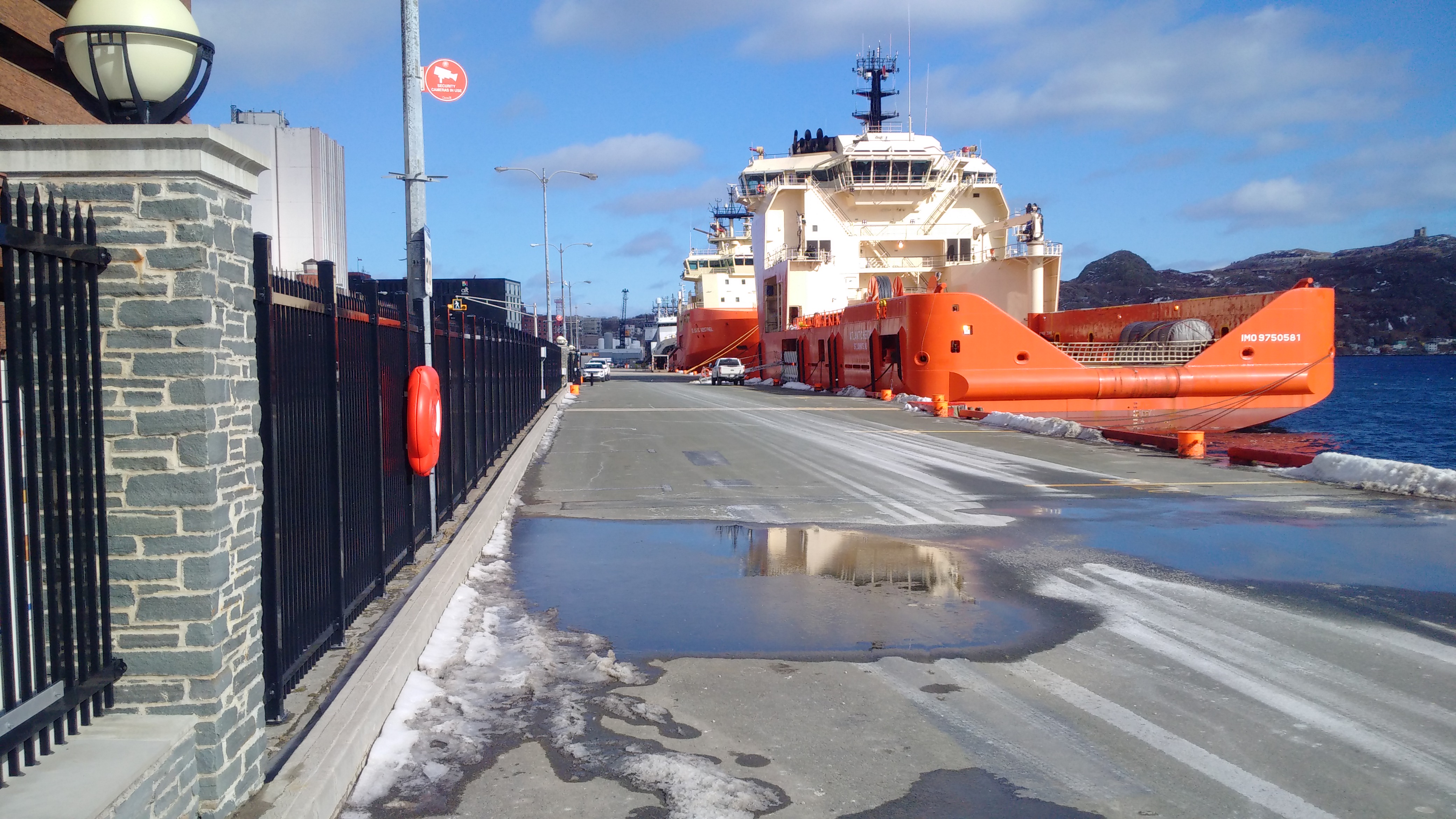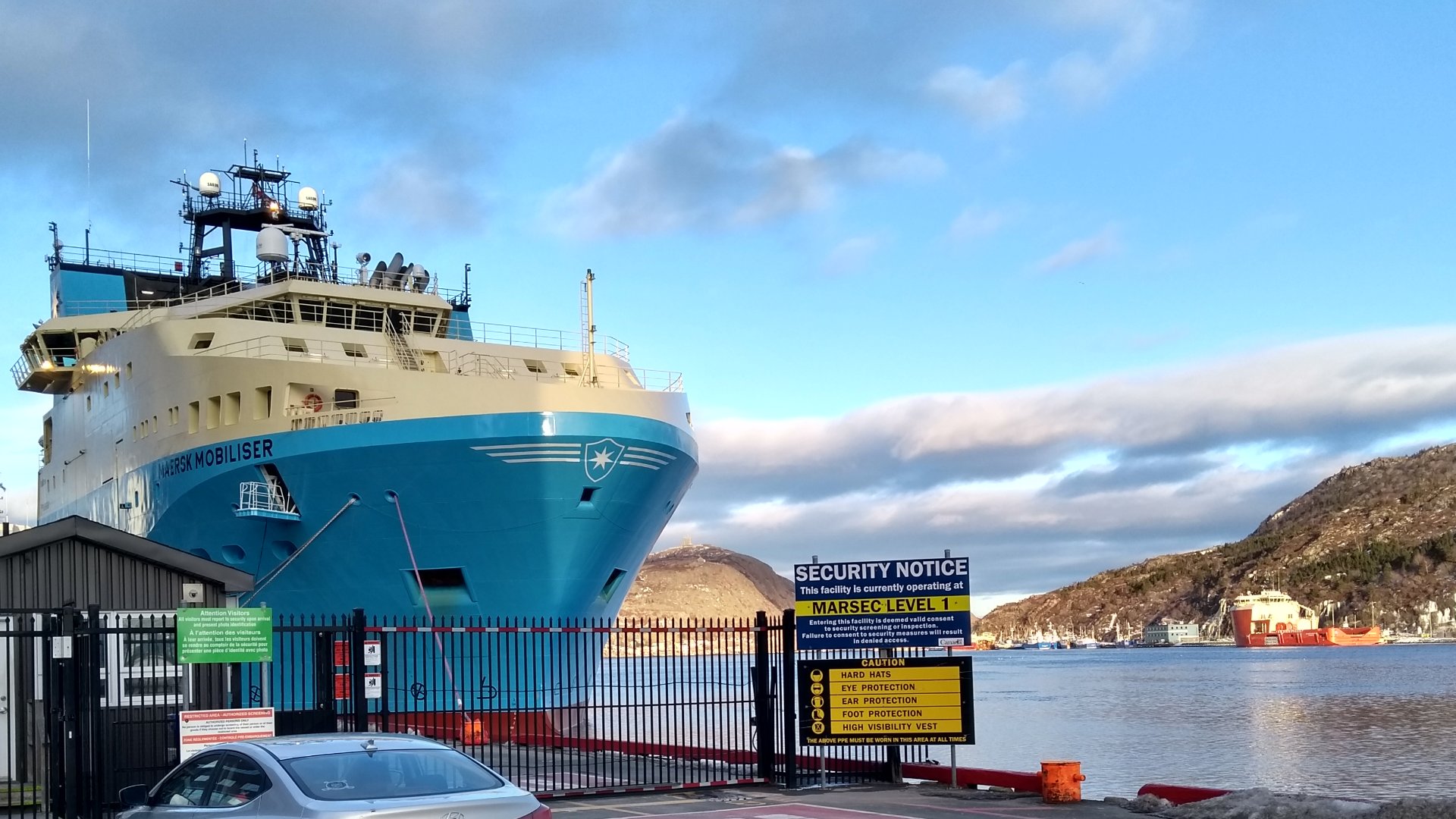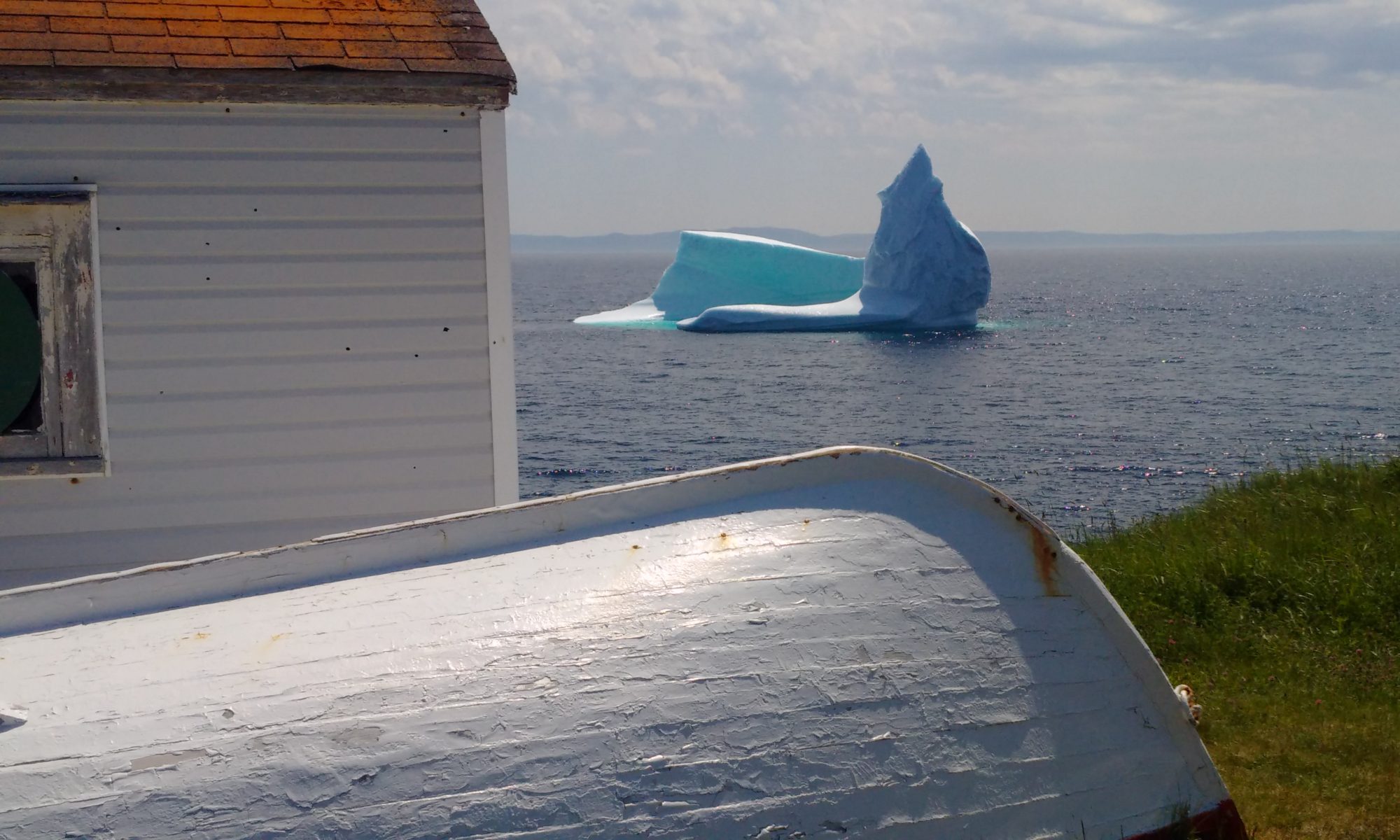
I’m sorry, but I can’t let this go as many of my readers well know. The St. John’s Port Authority Harbour Fence ought never to have been erected. Sheilagh O’Leary and Shannie Duff (the only two councilors of the day opposed) were right to rail against this urban blight and affront to democracy.
You may recall that this security fence was constructed in 2013. It cost St. John’s taxpayers roughly $425,000 of the total cost – estimated to be in the vicinity of $850,000. We (the taxpayers) were permitted to spend that money to make it look pretty. And in fact, as security barriers go, this is no Trumpian design.
However, cutting Newfoundlanders off from the waters to which they have had access for five-hundred years is the point. That is the context.

There has been a great deal of speculation about what the fence achieves / why the fence is there. Let’s be specific on this. The fence defines a secure port area that is compliant with MARSEC Level 1. Canadian Marine Transport Security Regulations define Level 1: a marine facility security plan (that contains) security procedures, as appropriate to the facility’s operations, to prevent unauthorized access or activities in restricted areas that includes –
- Restricting access to authorized personnel;
- Securing all access points not actively used and provide physical barriers to impede movement through the remaining access points;
- Controlling access to restricted areas;
- Examining the identification and authorization of persons and vehicles seeking entry;
- Patrolling or monitoring the perimeter of restricted areas;
- Using security personnel, automatic intrusion detection devices, surveillance equipment or surveillance systems to detect unauthorized entry into or movement in restricted areas;
- Directing the parking, loading and unloading of vehicles in restricted areas;
- Controlling the movement and storage of cargo and ships’ stores;
- Designating restricted areas for performing inspections of cargo and ships’ stores that are awaiting loading; and
- Designating temporary restricted areas to accommodate marine facility operations, including restricted areas for segregating unaccompanied baggage that has undergone authorized screening by a vessel operator.
The St. John’s Port Authority Practices and Procedures document sums MARSEC Level 1 as it relates to Piers 9 to 11 rather more succinctly:
The Restricted Area is a secure area that is intended to ensure the asset is protected from unlawful interference. It is also intended to reduce opportunity for unlawful interference through these key security assets. This could be caused by people, vehicles and/or equipment, either as the threat itself or as the delivery mechanism for the threat.

The Ports Authority also provides rationale for the fence on their website. It offers up two reasons: safety and security.
The safety argument is an argument of convenience. It has evolved to quell the backlash. Many otherwise intelligent people have bought into this despite the fact that one could deduce that safety is not a concern along the western portion of the harbour apron and that the Water Street Dig is actually far more dangerous (yet invariably controlled).
I am personally unaware of any member of the public having been injured on the waterfront in my lifetime. The “working harbour” argument is a term created by bureaucrats to condescend any discussion related to the harbour based on aesthetics, pedestrian enjoyment, tourist interest, history, support of Water Street commerce, music, arts, entertainment, civic pride, or fresh air.

The security argument is loaded with all kinds of dire warnings that if the Port Authority did not erect the fence, it would mean de-certification of SJPA-managed property as being ISPS (International Ship andPort Facility Security) compliant. But doesn’t it strike you as odd that this does not apply to other berths in the harbour? I would venture to say that the SJPA saw this as the most convenient way to achieve compliance. It was not necessarily the only way.
In other words, MARSEC Level 1 = ISPS compliance. But ISPS Compliance does not necessarily demand MARSEC Level 1. And given that the International Maritime Organization introduced these security provisions in 2004 – in response to maritime terrorist incidents and 9/11 – why was the port of St. John’s not rendered “non-compliant” in the decade defined by the IMO provision and the completion of the SJPA fence?
The fact is that the fence was put there for cruise ships. All other arguments have little basis. The SJPA Practices and Procedures document is quite specific on this point: “The Maritime Transportation Security Clearance Program only applies to (the) Oceanex container terminal and the St. John’s Port Authority Cruise Facilities.”
Yet, as CBC noted in January of 2013: “The St. John’s Port Authority has said the fence is necessary to provide extra security for shipping, including in the offshore oil industry, and has said it needs to meet federal requirements. However, Transport Canada has said it is satisfied with the current security arrangement.”
So let’s boil it down: No cruise ships = no security clearance program required.
In a CBC article from December of 2012, SJPA CEO Sean Hanrahan was quoted: “Security is paramount. We don’t want to shutdown an industry that generates about a quarter-of-a-billion dollars a year and creates 3,000 jobs.” To be frank, neither Joey Smallwood nor Chicken Little could have come up with an argument less steeped in post hoc fallacy.
Now there’s something I hate almost as much as the harbour fence: cruise ships. Doc O’Keefe led us to believe that these ships were a huge contributor to the local economy. This is nonsense. The 2017 academic study Economic Impact of Cruise Ship Tourism in Atlantic Canada found that on average, cruise ship passengers spent a whopping $28.20 each in St. John’s. Crew members spent less: $20.79. So if you take the St. John’s cruise agenda and examine it in detail by counting the maximum number of passengers and crew, combined with the statistic that 20-40% actually don’t disembark at all, you can determine that only $0.94 to $1.25 million will be dropped into the hands of local merchants this year.
I won’t say “Do the math”. I have already done it for you:

It is my contention that not only do we not need this horrible fence, we don’t need the cruise industry! The contribution back to the people who paid for the fence is a joke. The inflated numbers produced by Cruise NL simply cannot be substantiated. The good people coming in from CBS, Mount Pearl, Paradise and Torbay to watch the Growlers or the Edge, contribute far more to local business – exponentially more.
This just goes to demonstrate the decision to put the harbour fence up was not for the benefit of anybody here. It was for the benefit of people from elsewhere. We just paid for it.

Hi Jim, Love your site. The idea for the “Pen” area is great
Most of this fence should come down. Leave a small section for the cruise ships to make them feel safe. Once beyond the fence it’s every man for themselves.
Great election platform for the next civic election.
Jim, yet another great blog! Thank you for articulating this issue so clearly. Next step; how do we go about Taking Down That Fence.